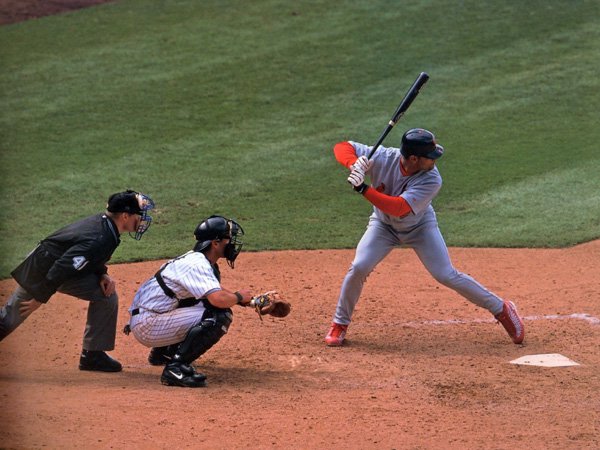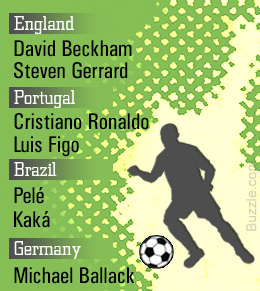eight man position, tips on converting to 8
Question
Deane
Thank you for your response.
My goals are to gain a deeper understanding of the position, tatics and stratigies. Tips on being a better player.
-------------------------
Followup To
Question -
Thank you for taking my question!
I have played rugby several years in and after college as a second row. I am 6 3 205pds, in good shape, can still move around the field pretty well and have a good sense of field flow from both sides of the ball from pack to backs.
I have been asked to play 8 man on my new team and have jumped at the chance! Now I need to better understand the role of the eight man and tips on how to be most effective in this position.
I enjoyed the answer you posted on the prop position and could use your help!
Answer -
Bruce,
Thank you for the kind words.
Among the many requirements for the eightman:
Well-developed neck, shoulders, back and leg muscles are necessary to physically perform as a the eightman. While these are necessary for the pure power, they are also necessary to maintain good body orientation. This is important both for his pushing/holding requirements as well as his ability to break off quickly to attack, or support an offensive move.
Good technique is as, if not often more, important as pure physical size or strength. This means the ability to apply correct technique to maximize strength:
-foot position
-body angles
-correct binding
That being said, he must have all around strength and stamina
The eightman generally combines the mobility and aggressive style of play expected of the flankers (initiating second phase rugby) and the strength and power of the locks (scrums and lineouts). Additionally, he must have above average ball skills (Hand and Foot), mobility, and ability to anticipate good angles of run (to get where the opponent should be going). This requires him to be able to read the game.
As a pack leader, he must have the ability (physical and mental/tactical) to control and direct forward play at lineouts, base of scrums and most platforms for attack and defense. He must be able to communicate and work effectively with the scrum half
In order to perform the above requirements, the eightman needs several essential skills
Contact:
-To scrummage effectively, safely and consistently
-To provide stability and guidance from the rear of the scrum
-To provide maximum protection to the scrumhalf
-To support in the line-out
-To legally prevent opposition from breaking through the line-out
-To tackle from close positions. Eightmen are not known for making make those cool open field tackles.
-To maul and ruck-low body position for driving forward. Many teams use the pod formation off of the rucks and mauls to punch the ball forward. Often is a quick eightman and flanker that establishes the initial breakdown and prepares the second pod.
-Continuous commitments to secure balls and maintain possession.
Running:
-To run to support backs in attack and in defense
-To understand and utilize the different angles of pursuit
-To run ahead straight and hard with commitment and conviction
-To run at speed, with the ability to accelerate quickly, and to continue running after strenuous physical effort
Handling:
-To control ball, and when required, release it properly at the back of scrum
-To catch and deflect a ball at the back of line-outs, or provide lift to a jumper
-To pass the ball at varying lengths and speeds
-To give and take a short lifted pass
-To manipulate play by ripping and rolling from a maul
-To deal with a ball on the deck and pick it up quickly at speed
NOTES:
-The eightman must be fit and physically strong. He will often the start the attack from the scrum and become the first to encounter the opposition.
-He occupies an essential tactical position in the team and as such, he has the responsibility to control and direct play.
-The eightman must have a serious commitment to angles of run and to the support of moves in attack and defense.
-All around athletic ability and durability is vital - he should be able to run like a back as well as play effectively in set forward play.
-He must direct the scrum, especially during set play.
Deane Shephard
Stuttgart RC
Answer
Bruce,
As an experienced rugby player, especially as a lock, tactics for the eightman should not be that difficult; when taken in context with your team抯 plan and patterns of play.
What follows is based on what my teams generally do.
Forward Play: The forwards have five goals during a game
1. Win the ball from set play
2. Win the ball from loose play
3. Provide support for each other and the backs
4. Create a psychological advantage by being aggressive and displaying superior skill
5. Tackle the opposition to the ground
Knowing what your team's goals are will assist in determining where to focus your effort. The eightman is key for ensuring that ball is cleanly won for the team. A simple technique is to keep the left leg relatively straight and only move the right foot to enable the scrum half to reach in to retrieve the ball with some protection. If your team uses eight man pickups there is something very scary to a scrumhalf or flyhalf to see a rambling eightman carrying the ball right towards them (psychological advantage)
Team leaders:
-The Captain is the primary leader on the field (may be any position)
-The Unit Leaders (players responsible that his unit is set-up and following the Captain抯 game plan). Often the scrum leader is the tighthead prop or hooker.
-The Tacticians (players responsible for accessing the play on the pitch and suggesting tactical changes in game play to the Captain): The pack and backline should each have a tactician whose primary function is to observe the other teams' tendencies and inform the unit leader. For example: the inside center tells the fly-half that the opposing wing is playing flat, so the fly-half calls for a kick to the wing on the next set play. They are generally: from the Scrum: eight-man, or flanker and from the Backline: inside center or fullback.
Since the eightman often has to make judgments based on the field situation, he should know how to set up the field and have general actions based on what part of the field he is at, or where the action is at.
Mentally divide the field into thirds (three zones): attack, contested, and defense. Each zone has different considerations for moving the ball forward.
-In the attack zone, maintaining aggressive possession is the most important concept (kicks should be conservative, passes accurate, support consistent, and next phase being initiated).
-In the defense zone, to prevent scoring by keeping the opposition from advancing the ball or maintaining possession of the ball is the most important concept (long kicks for touch, short lineouts, and solid attacking line play).
-The contested area should be used to mentally change from offense to defense and defense to offense.
Within each zone, there is a primary team action:
-Contested zone: the most players to the ball the quickest
-Attack zone: aggressive advancing the ball with support
-Defense zone: maintaining possession as team sets up for the attack
The most fundamental tactic in rugby is attacking to the area where the defense is the thinnest, or weakest. Eightman because of their size are often able to take advantage of the defense weaknesses.
The tacticians should watch the other team to see where their players go and how they react. Since a tactician should have a feel for the game of rugby, he can generally predict what the other team will do. On kick-offs for example, most teams will kick to the forwards in an area ten to fifteen meters from the centerline. Most teams expect a kick-off to go to the forwards. If our strengths are in the backline, then we should kick deep to the backs.
Rugby is a full contact sport that lasts over a period of an hour and a half. Fitness enables a player to make it around the field, and at the same time to continue to concentrate on the game. Often when a player lacks fitness, his concentration and focus on the game, and their potential actions within the game starts to drop significantly. Fitness enables a player to continue to play hard. The eightman should be one of the fittest men on the field since he must have both the power of a lock and the mobility of a flanker.
As I mentioned earlier, the tactics and strategies for an eightman must be based on his team抯 own patterns of play. Patterns of play are generally actions a team will take based on situations and locations on the pitch.
Here are some standard patterns of play:
Location of ball/play: Team action
Penalty behind our 50 meter:
-kick for touch
Penalty behind in their 22 meter:
-kick for points if possible,
-if not kick for touch
Penalty within 10 meter of their try line:
-run a penalty play
Lineout behind our 22 meter:
-first pod, stable platform, middle man strip,
-ball to fullback or fly half for kick to touch
Lineout behind our 50 meter:
-first or second pod, stable platform,
-back play to the centers towards the pack.
Lineout behind their 22 meter:
-first or second pod, drive or peel
-back line play to the wing
Lineout within 10 meter of their try line:
-first man, drive
Scrum behind the fifty meter:
-eight-man pick or back line play to centers
Scrum beyond the fifty meter:
-back line play to attack the gap between the opposing outside center and wing or kicks.
Scrum within 10 meter of their try line:
-eight-man pick up
Lineout within 10 meter of our try line:
-3 man-drive
Scrum within 10 meter of our try line:
-stable platform, if being pushed back , wheel left shoulder,
-kick to touch
Note that the eightman pick up is very important to the patterns of play. As a result, the eightman should have a stable base, not a pushing base, when he releases from the the two locks. From a stable base, he can simply release the locks, pick up the ball, likely make contact with attacking scrumhalf, certainly make contact with opposing flanker and maybe eightman, or make a good pass to the scrumhalf.
I am not sure that this is what you wanted. I hope it provides some assistance. Basically players?skills and techniques are generally universal. When you start talking tactics, those become more based on the style of play of the team.
Good luck,
Deane Shephard
Stuttgart RC
possision change
Keeping the ball


